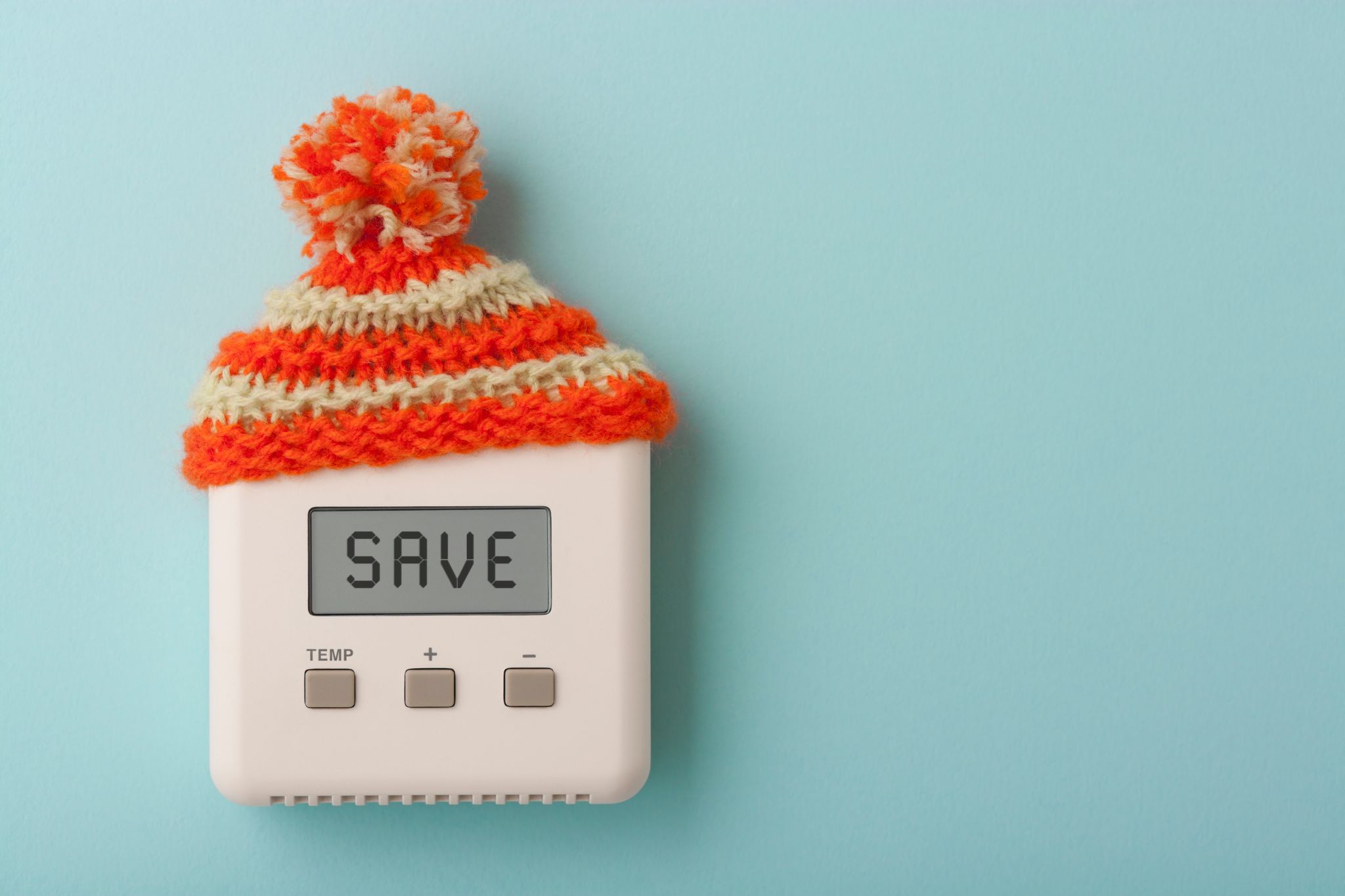It’s easy to imagine your energy bill going sky-high when you hear your furnace fire up. That’s the reason so many people believe keeping a steady temperature of 68 degrees is the key to energy savings. But that’s a myth.
In fact, the lower the temperature, the slower your house loses the heat, according to energy.gov. And that keeps your hard-earned money from floating out the door.
So, if you truly want to see your heating bill drop, turn down the temperature. You can save as much as 10% a year on heating and cooling by simply turning your thermostat back 7 degrees to 10 degrees Fahrenheit from its normal 68 degree setting for eight hours a day, while you're asleep or away from home, says Energy.gov.
When you return, turn it back up to 68 degrees. Or better yet, take advantage of what a programmable thermostat can do.
In the summer, just flip the strategy:
- Set your AC to 78 degrees when you’re home.
- When you leave, turn the AC off or set your thermostat to a warmer temperature.
The percentage of savings from setting back your thermostat is greater for homes in milder climates than for those in more severe climates.
Here are some other misconceptions about and tips for reducing your heating and cooling costs.
Related: How to Use a Programmable Thermostat to See Real Savings
Resist the Urge to Crank Up the Thermostat
Turning up the thermostat past your desired setting won’t speed heating. Your furnace works at the same pace regardless of temperature settings. It’s better to set your temperature to a moderate level and wait for it to heat your home.That also applies to your AC; setting the thermostat to its coolest temperature won’t chill your home any faster.
A Programmable Thermostat Doesn’t Automatically Reduce Energy Use
Installing a programmable thermostat with factory settings isn’t going to do you much good. You can only reduce the amount of power your home consumes if you create a personalized heating and cooling program that makes the most of your own energy-saving opportunities.
Programmable thermostats come in four different preset schedule styles, so it’s important to pick one that’s in sync with your household’s scheduling needs:
- 7-day programming offers the most flexibility. It allows you to set a different heating and cooling schedule for each day of the week.
- 5-1-1 programming is a good choice if you have a predictable weekday schedule. It lets you set an identical heating and cooling plan Monday through Friday, and a different plan for Saturday and Sunday.
- 5-2 programming is similar to the 5-1-1 programming, except you can only program one heating and cooling schedule for both Saturday and Sunday.
- 1-week programming is a good choice if you stick to the same schedule every day of the week. It allows you to create a single heating and cooling plan that repeats daily.
Bonus tip: When daylight savings comes around, remember to adjust your settings so your heating and cooling program isn’t off by an hour.
Some Smart Thermostats are a Lot Smarter Than Others; Choose Wisely
Smart thermostats aren’t all the same. Sure, all offer internet connectivity for remote management using your mobile device. But each thermostat brand uses a different proprietary self-programming technology.
For example, Google's Nest relies on sensors and a learning algorithm to manage your heating and cooling preferences. Honeywell’s Lyric connects your in-home devices from anywhere on any mobile device. The Total Connect 2.0 app lets you control thermostats and more.
But here’s the kicker: Just like manual or programmable thermostats, it’s up to the user to set preferences that enable energy savings. And for those of you who still believe a smart thermostat can shave 30% of your utility bills, here’s a reality check: A study conducted by Nest revealed its users can save only 10% to 12% on heating costs and 15% on cooling.
Keep an open mind about brands and products. ZDNet says Ecobee SmartThermostat with voice control might not be the brand name homeowners most associate with smart thermostats, but it's user friendly, integrating easily and simply into homes.
Bonus tip: Avoid those wireless apps that let you control the thermostat remotely. A study on Wi-Fi enabled thermostats says that using them remotely can boost energy use. This is because they allow users to crank up the heat or AC remotely before they return home.
Related: Should You Convert from Oil to Gas Heating?
